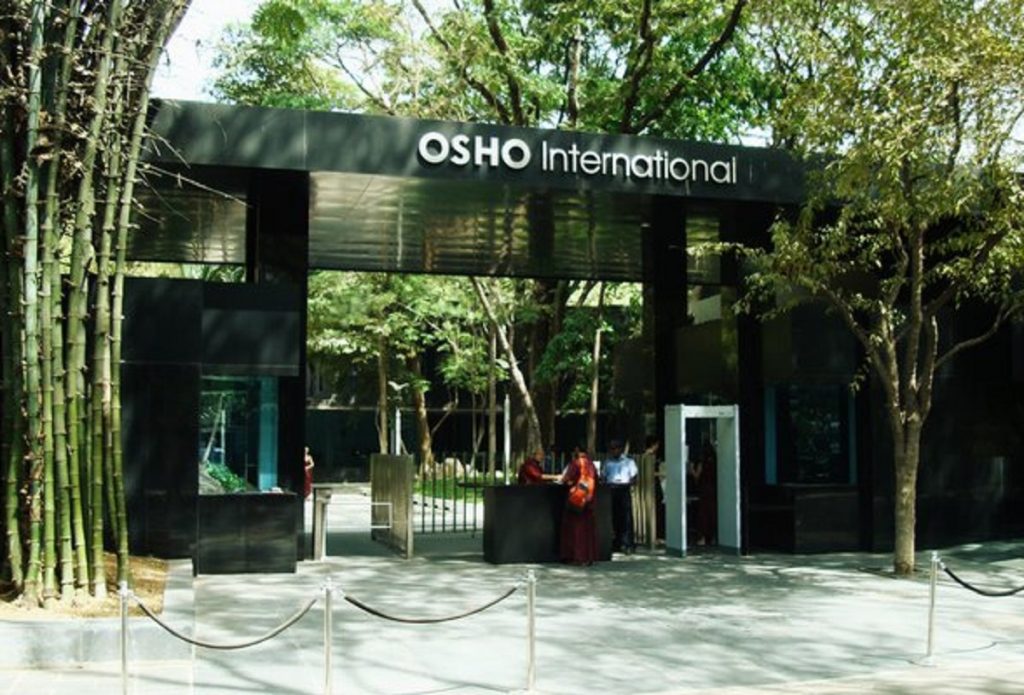A recent Bombay High Court order has set the proverbial cat among pigeons at the Pune commune of Osho, or Bhagwan Rajneesh, the Indian guru with piercing eyes.
The sprawling abode, once called the IBM of peace and love, will now have to follow orders of the judiciary.
The orders are significant and put the management team and trustees of the Trust (called OIF for Osho International Foundation) that manages this place under an uncomfortable spotlight. The OIF is based in Zurich, Switzerland.
The court has instructed that a committee including the Joint Charity Commissioner – selected by the Maharashtra government – and other stakeholders to conduct a financial inquiry in the movable, immovable and intellectual property rights associated with the Trust before any permissions are granted to them.
The six-acre commune, styled like the proverbial Xanadu of magician Mandrake, is located in Pune’s upmarket Koregaon Park.
The recent uproar was ignited early in 2021 when it came to light that OIF had put a portion of the Osho’s legacy up for sale surreptitiously under the cover of COVID closures. It came to light that the process for sale did not follow the mandatory process.
The sale had a “successful bidder”. Pune-based industrialist Rajeev Bajaj and his family were ahead in the race for two plots of the commune. He bid Rs 107.5 crore, higher than the one from Atul Ishwardas Chordia, chairman of Pune’s Panchsheel Realty (Rs 90 crore) who has built Pune’s landmark properties like the JW Marriott Hotel and a Bulgari Hotel in the Maldives. A2Z Online Services Pvt. Ltd offered Rs 85.5 crore and is placed third.
For now, the court has said there will be no sale till contentious issues are sorted out by the newly-formed committee.
Friends of Osho (popularly known as the Rebel Group) who opposed the sale of this land say that this is not one isolated incident. They claim that OIF has “broken every rule” in the book like “untrustworthy custodians of Osho’s legacy”.
Members of the OIF claim no rules were broken.
“Now the High Court order allows an investigation to begin and the truth to naturally emerge. OIF will have to comply this time as it is a court order,” says Sanjay Patel of the rebel group. Patel, whose spiritual name is Swami Moksha, says the committee will look into all contentious issues on hand.
This High Court order that Patel speaks about also contains other directives.
The biggest shot in the arm for the rebel group from the Order is that OIF must allow visitors to meditate at Osho’s final resting place. He left his body of heart ailments on January 19, 1990. His ashes are preserved in a beautiful space within the campus. The spiritual master rests there and thousands of his followers visit the commune to meditate in the hall. As of now, they were not permitted to meditate by officials of the OIF.
But now, by this directive, the High Court accepts the existence of this place, precious to many.
And here comes the real issue. Mukesh Sarda, a trustee and an important part of the management team, had previously filed an affidavit in the Bombay High Court saying that there are no ashes of the spiritual master in the commune and that there is no need for outsiders to enter the dome shaped hall.
“But the court recognises the fact that the ashes are preserved in the commune and followers of Osho and visitors to the commune must be allowed to visit the dome,” says Patel.
Lying in an affidavit to a court is an offence in India and it is a matter of time before this is brought to the notice of the Court.
The troubles for OIF do not end here. The newly formed committee will also oversee the matters related to Osho’s Intellectual Property including its annual revenues from sales of products produced by the spiritual master.
To put it in perspective, Osho left behind a treasure trove of more than 600 books and over 10000 hours of audio and video speeches)that sells in its original form and in translations all over the world.
It is said that every day, two Osho titles are released in the world. “This revenue from royalties runs into crores. It seems like no one knows where that money goes and now this will be looked into by the newly formed committee,” says Patel.
For the record, nearly 20,000 seekers took “Neo-sannyasa” and became his sannyasins, fondly called as the orange people. They were easy to identify with their robes – first in orange and then maroon – and the ubiquitous mala with the photo of the charismatic Guru.
Today, however, the campus stands almost deserted. A few die-hards visit the place which is partially closed. The OIF continues to ban individuals from entering the commune unless they pay exorbitant entrance fees.
All mails or attempts to communicate with OIF remain unanswered.

